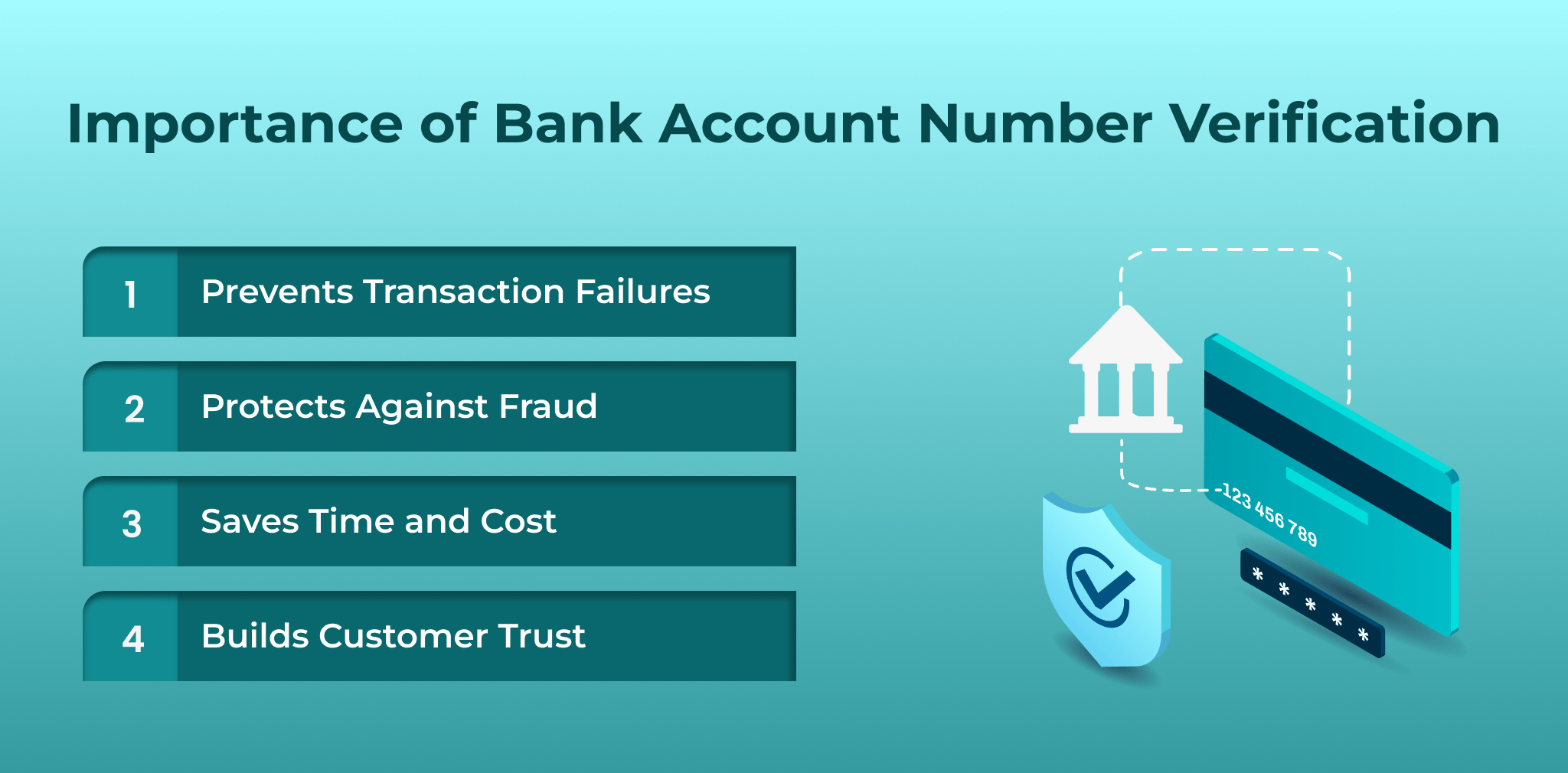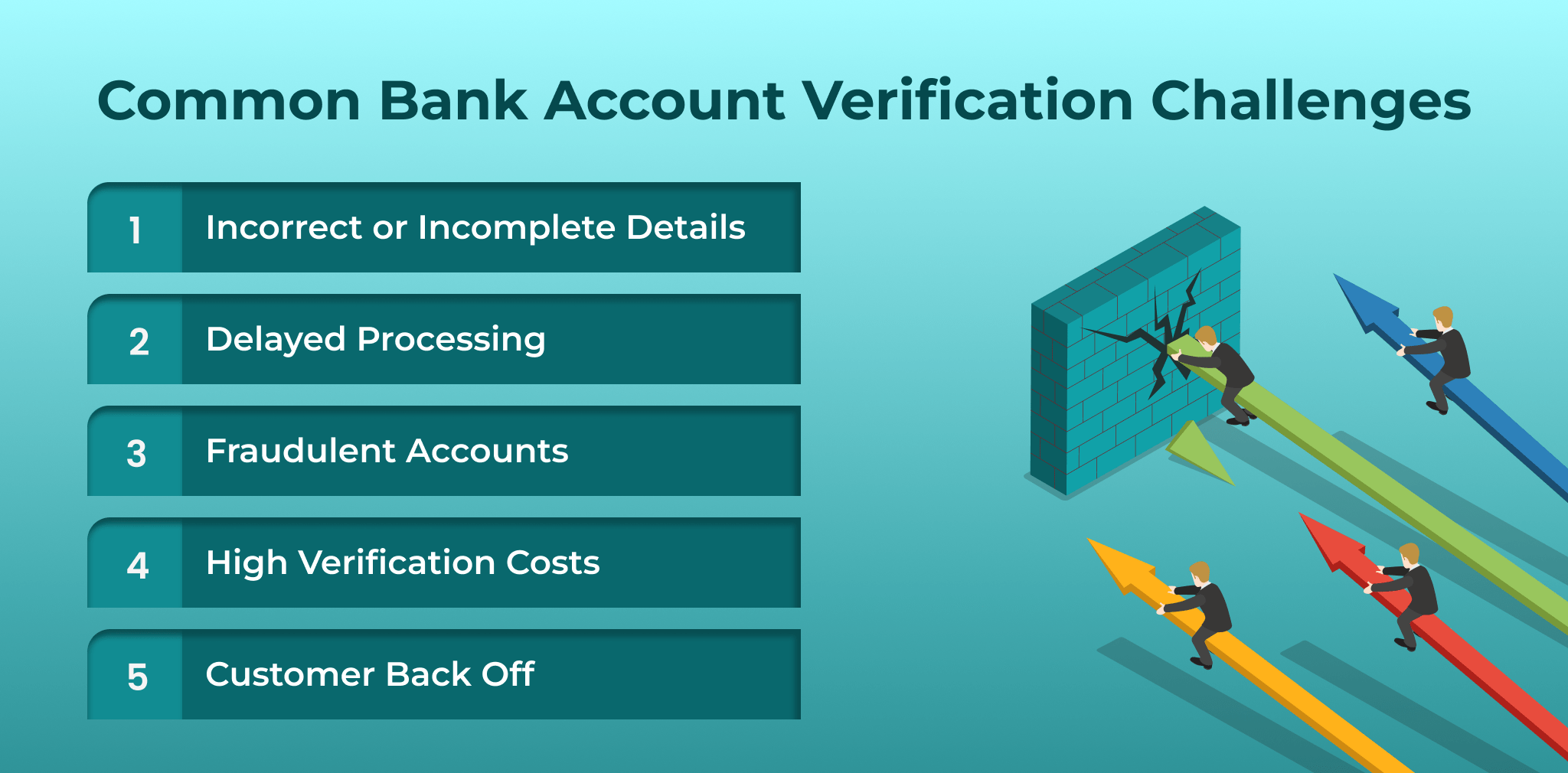Our Reserve Bank of India (RBI) reported a 166% year-on-year increase in the number of fraud cases. A Bank of India official was arrested for siphoning off Rs. 16 crore from 127 customer accounts. A 54-year-old man was arrested for a cyber fraud operation amounting to Rs. 5.62 crore. These cases are just a glimpse of an alarming trend, making bank account verification an essential practice.
What is Bank Account Verification?
Bank Account Verification is a process that confirms the given bank account is valid, active, and belongs to the intended account holder. It ensures that the account details provided are accurate before any financial transaction is processed.
Types of Bank Account Verification
These are the commonly used verification methods:
- Manual Bank Account Verification: A Traditional method where the bank or institution manually confirms account details with the respective banks.
- Penny Drop Verification: In this process, one rupee is transferred to the account to verify ownership and account details.
- Pennyless Instant Bank Verification: This process verifies the account instantly through APIs without requiring any transaction.
- Aadhaar-Based Bank Account Verification: Account verification through account linkage. It ensures the account belongs to the Aadhaar holder.
- Reverse Penny Drop Verification: In this method, the system requests minimal debit authorization from the user’s account to confirm ownership.
- IFSC Verification: It helps verify the account number and the corresponding IFSC code. It confirms that the account exists in the right account bank branch.
- OCR and AI-Based Verification: The OCR technology extracts and validates bank details from the uploaded documents using OCR and AI for instant verification.
Importance of Bank Account Number Verification
This is why account verification is important:
- Prevents Transaction Failures: Account verification confirms that funds are transferred to the right account. It reduces delays caused by bounced or failed transactions.
- Protects Against Fraud: It helps verify the ownership of the account to stop fraudsters from using fake or stolen account numbers. It reduces the risk of money laundering and identity theft.
- Saves Time and Cost: It reduces the manual reconciliation and administrative overhead. It prevents reprocessing of payments, refunds, or chargebacks.
- Builds Customer Trust: Customers feel secure knowing that their funds are transferred safely. It enhances the overall credibility of the business.
Automate your KYC Process & reduce Fraud!
We have helped 1000+ companies in reducing their user onboarding TAT by 95%
How Does Bank Account Verification Work?
Here is how bank account number verification works:
Step 1: Gathering Account Details
- Bank Account Holder’s Name
- Bank Account Number
- Bank Name and Branch
- IFSC Code (unique identifier for bank branch)
Step 2: Verify account details through the following methods:
There are many ways to check account details:
- Penny Drop (Micro-Deposit)
A nominal amount is transferred to the account. Account holder then confirms receipt via bank statement or SMS.
- Bank Statements
The user uploads a recent bank statement. The provided account details (number, holder name, IFSC) are then cross-verified against the statement.
- Instant Verification via APIs
APIs (Application Programming Interfaces) help in the quick verification of account details like name, number, and IFSC codes in seconds with automation.
Step 3: Get Verification Results
After completion of the verification process, get the result:
When the details are matched, the transaction can proceed smoothly.
Manual methods of verification take 1 to 2 days for verification. On the other hand, the digital methods hardly take a few minutes or seconds.
Common Bank Account Verification Challenges
Here is the list of challenges that occur in bank account verification:
- Incorrect or Incomplete Details: Errors in account number, IFSC, or name mismatch often lead to failed verifications.
- Delayed Processing: Manual or traditional verification methods can consume time. It can lead to payout or onboarding delays.
- Fraudulent Accounts: Fraudsters may use fake, inactive, or mule accounts, which makes it hard to confirm authenticity.
- High Verification Costs: Methods like penny drop verification and costs per transaction.
- Customer Back Off: Many users hesitate to share sensitive details due to privacy and security concerns.
Conclusion
Bank Account Verification is no longer a formality. It is an essential step that confirms secure and seamless financial transactions. Currently, online fraud and cybercrimes, verifying a bank account is essential active, valid, and belongs to the intended user protects both business and customers from financial loss.
Modern verification methods, such as instant API verification, Aadhaar-based verification, and AI-driven document checks, offer faster and cost-effective alternatives to the manual processes. It can prevent transaction failures, reduce fraud risks, and save time and costs.
FAQs
How can you verify a bank account?
You can opt for various methods for bank account verification, such as Penny Drop Verification API, etc.
What is proof of a bank account verification?
Proof of bank account verification is a combination document or digital record showing that the account is valid, active, and belongs to the stated account holder.
What do I need to verify my bank account?
You need the bank account number, the account holder’s name, and the IFSC code for the bank account number verification process.
Is Penny Drop verification safe?
Yes, Penny Drop Verification is safe.
Can account verification detect fraudulent or mule accounts?
Yes, account verification helps detect fraudulent or mule accounts.
Automate your KYC Process & reduce Fraud!
We have helped 1000+ companies in reducing their user onboarding TAT by 95%






About The Author: Vijay Kandari
More posts by Vijay Kandari